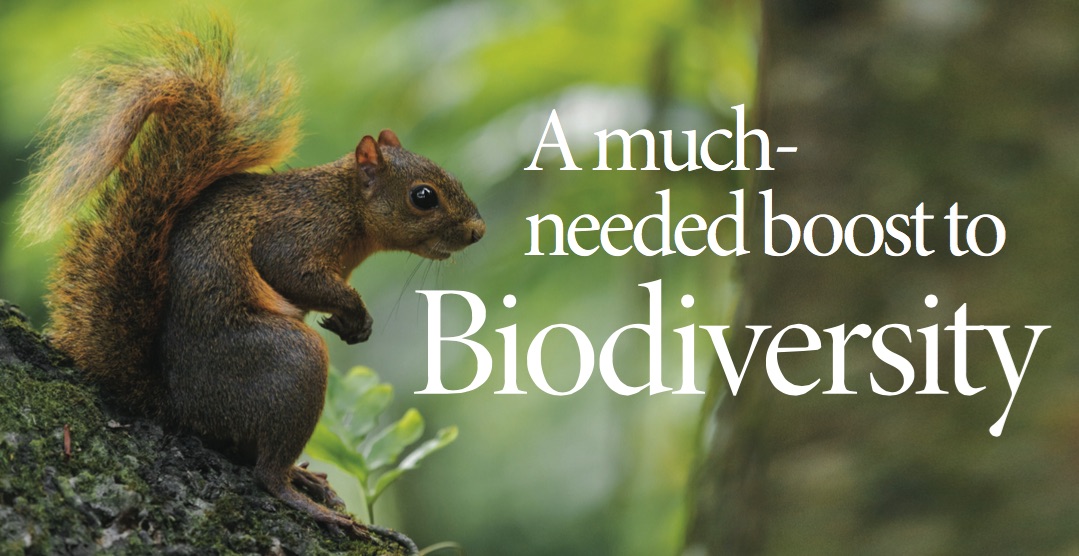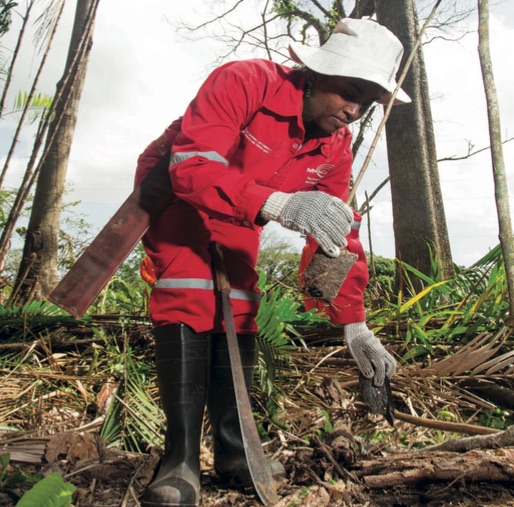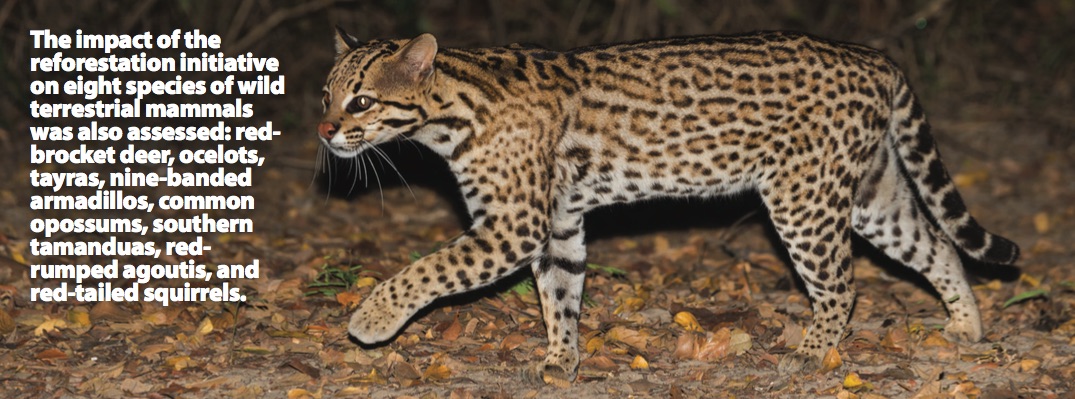
UWI study shows NGC’s Reforestation Programme enhances plan and animal life in forests in southwest and southeast Trinidad
In 2005, The National Gas Company of Trinidad and Tobago Limited (NGC) embarked on its ambitious 315 Reforestation Programme to replace forests removed to make way for two of its major projects. From 2005 to 2018, more than 100,000 seedlings of 17 species of trees were planted. The question then became, what was the impact of this initiative on the plant and animal biodiversity in the reforested areas?
"The NGC reforestation exceeded expectations,” said John Agard, Emeritus Professor of Tropical Island Ecology. “Biodiversity was increased in each of the plant diversity indices The UWI team used. Also, there was an increase in animals, including endangered species like ocelots."
Biological diversity – or biodiversity – refers to the diversity within species, between species and their interconnected ecosystems. Scientists see biodiversity as critical to combatting climate change and sustaining life on the planet. NGC, with the assistance of The UWI, embarked on the biodiversity study in 2022.
Myles Lewis, NGC’s Head of Corporate Social Responsibility, explained that “the evidence from the study shows emphatically that the NGC Reforestation Programme has enhanced both plant and mammal biodiversity.”
He added, “The exercise yielded additional benefits as well, with the observation that deer appear to be switching from diurnal to nocturnal patterns, possibly due to hunting in the area. Also encouraging is the comparatively high number of ocelots recorded, given the animal’s status as an environmentally sensitive/endangered species in Trinidad and Tobago.”
The biodiversity study was conducted at Grants Trace, Rousillac, Guapo/Parrylands, and Morne L’Enfer, as sufficient data was available to conduct species richness calculations in these large areas (the Reforestation Programme included Morne L’Enfer Forest Reserve near La Brea at Rousillac and Guapo, the Victoria-Mayaro Forest Reserve in Moruga, as well as Mayaro and Rio Claro).
Data outputs from a Rapid Botanical Survey (RBS) conducted by The UWI National Herbarium, in collaboration with the Forestry Division and Oxford University in 2005, was compared with data recorded for Phase 1 of the programme in 2018. The RBS took place shortly before the replanting exercise commenced, providing a reliable reference point for comparison.
A range of indices were employed to determine the impact on biodiversity, including:
The impact of the reforestation initiative on eight species of wild terrestrial mammals was also assessed: red-brocket deer, ocelots, tayras, nine-banded armadillos, common opossums, southern tamanduas, red-rumped agoutis, and red-tailed squirrels. This was achieved through the deployment of 10 Reconynx HC 600 Hyperfire camera traps.

Over a period of 50 days, a total of 2,761 photos were taken. While there was no baseline data on the relative abundance (number of camera captures per 100 trap days) for the study sites, the survey results could be compared to similar survey sites in the Trinity Hills and Central Range of Trinidad. The comparison revealed that there was a higher relative abundance for red-brocket deer, ocelots, tayras, tamanduas, and red-tailed squirrels in the reforestation sites.
Speaking on the benefits of biodiversity to both the natural world and society, Mr Lewis said, “The variety of plant and animal life contributes towards the world’s food supply, raw materials for manufacturing, and employment of people. A healthy biodiversity leads to a healthier and more secure supply of food, materials and medicine, and more vibrant economies.” In addition, biodiversity is strongly correlated to climate change.
The UWI team involved in the biodiversity study was headed by Prof Agard and included both staff and students. Working with NGC, UWI has previously conducted studies to estimate the amount of carbon dioxide sequestered by the reforestation project both above and below ground.

Completed in 2021, NGC’s Reforestation Programme was a collaborative effort with the Forestry Division of the Ministry of Agriculture, Land and Fisheries, and the company’s fence line communities to replant 315 hectares of forest in the southwest and southeast forest conservancies in Trinidad. The project reflected NGC’s “No Net Loss Principle” as part of its wider company ethos, in alignment with the National Environmental Policy of Trinidad and Tobago.
“Though the Reforestation Programme began as a provision of our Certificate of Environmental Clearance for our pipeline projects,” said Mr Lewis, “The initiative evolved over the years to become part of NGC’s CR/CSR practice and sustainability culture.” Having completed all phases of the project, NGC delivered the replanted forests into the care of the Forestry Division in 2023.
“NGC’s commitment to environmental preservation does not end here,” Mr Lewis added. “We continue to explore opportunities to partner with stakeholders and communities through The NGC Group’s Green Agenda to contribute towards environmental entrepreneurship, carbon reduction and further enhanced biodiversity.”